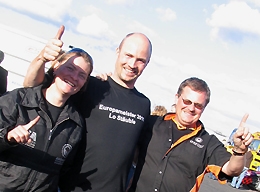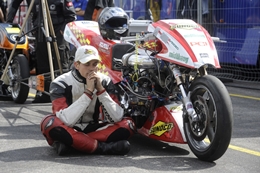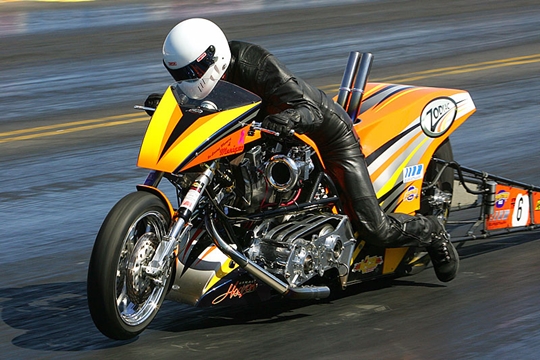Czech republic
 Finland
Finland  Norway
Norway 
the Netherlands
 United Kingdom
United Kingdom

Sweden
 Switzerland
Switzerland  Germany
Germany 
We interviewed veteran Per Bengsston to learn about the characteristics of the class and to get a picture of what variables the Super Twin teams work with as part of their every day work at the race track!

Super Twin rider and editor Per Bengtsson, Sweden
Can you tell us the facts in brief? What
performance/power/fuel/cylinders are we looking at?
The main characteristic of the Super
Twin class is that only two-cylinder engines are allowed, this also gives
this class a very special "sound".
One of the benefits of the class rules is that it makes for
many sucessful engine combinations. Most common are the very large fuel injected engines, up to 3.2 liter displacement (195 cu.in)
with the fuel containing 99% nitromethane. We also have many 2 liter (183
cu.in.) supercharged engines allowed to use up to 90% nitromethane and
supercharged 1700 cc (103 cu.in.) twins with unlimited nitromethane
content.
The variations do not stop there, you can run v-twins with
cylinder angles ranging from 45 to 90 degrees and also the more odd
parallel twins. Transmissions are usually 2-speed gearboxes with clutch
but we see more and more teams using direct drive (high gear) with
multistage clutches like is used in the Top Fuel Dragster car
class.
What is remarkable is that all the combinations run 6.5 to 6.8
seconds in the quartermile!
These engines put out about around 800-900 horsepower with huge
amounts of torque.
Martijn de Haas,
the Netherlands
What has the evolution been like in recent years in terms of technology? Performance? The class as regards to number of teams, etc..?
The class was
created by a number of
Swedish teams in the
early 1990's and became a UEM
Championship class in 1994.
There has been much technological development over the years, multistage clutches, side-by-side engines, and perhaps most important, the ignition systems. Because these bikes are fueled by nitromethane, this has resulted in improved durability and better repeatability as regards to performance.
The really good news is that the number of teams have increased in the last few years, particularly teams that are performing well. The championship races in Sweden and Norway usually have about 20 teams who are looking to qualify for eight places in the final eliminations. This makes it a fantastic show for the
audience.
For the 2011 championship, we're looking at bigger starting fields
than ever with teams coming all the way from Canada and Australia to participate. One of the sporting benefits of this is of course that many nations are represented as it should be in a European Championship.
What variables are used to adjust the bike for the track? What is most critical?
The class can be
compared to the Pro
Mod class for cars, these
bikes need good traction along
the the entire length of the drag strip. A Super Twin Top Fuel bike is relatively heavy and generates all its power through only two cylinders. The rear tire pulls very hard against the track surface due to the engine pulses which causes tire shake to be one of biggest issues. To
address this it is important to correctly and carefully portion out the
power to the rear wheel
which is done primarily by adjusting the clutch but it also involves ignition timing and tuning the fuel delivery systems.
Samu
Kemppainen Finland






